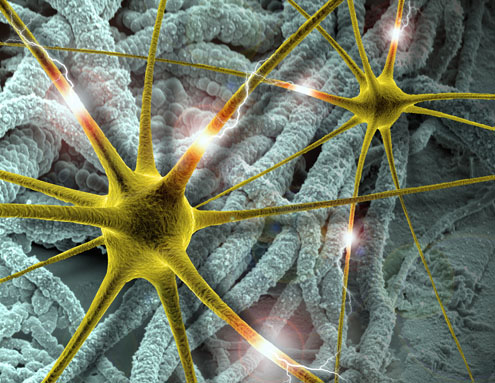Researchers give brain implants a nanotube coat to boost performance

Microelectrodes implanted in the brain are increasingly being used to treat neurological disorders, but robust and reliable chronic application of neural electrodes remains a challenge.
Scientists at University of Michigan have created brain implants tested in rats that can more clearly record signals from surrounding neurons. The findings could eventually lead to more effective treatment of neurological disorders such as Parkinson's disease, epilepsy, and paralysis.
The newly developed brain implants use nanotubes coated with PEDOT, which is a bio-compatible and electrically conductive polymer that has been shown to record neural signals better than conventional metal electrodes. The coating allows the electrodes to operate with less electrical resistance than current metal electrode sites, which means they can communicate more clearly with individual neurons.
Conductive polymers, which are large organic molecules that conduct electricity, are good candidates for biomedical applications such as neural interfaces, biosensors and drug delivery systems because of their conductivity and bio-compatibility.
According to the researchers, in the experiment, they implanted two neural microelectrodes in the brains of three rats. PEDOT nanotubes were fabricated on the surface of every other recording site by using a nanofiber templating method. Over the course of seven weeks, the team monitored the electrical impedance of the recording sites and measured the quality of recording signals.
The U-M researchers found that the PEDOT nanotubes led to a 30% improvement in the quality of neuronal spike recordings relative to comparably sized metal electrode sites, primarily through a reduced noise level amidst maintained spike amplitudes. They also found that the organic coating might be used as a novel method for biosensing to indicate the transition between acute and chronic responses in brain tissue.
According to Mohammad Reza Abidian, a post-doctoral researcher at the U-M Department of Biomedical Engineering, microelectrodes and neuroprosthetic devices hold the promise to return functionality to individuals with spinal cord injuries and neurodegenerative diseases.
The results of the experiment are featured in the Oct. 5 issue of the journal Advanced Materials. The paper is titled, "Interfacing Conducting Polymer Nanotubes with the Central Nervous System: Chronic Neural Recording using Poly(3-4-ethylenedioxythiophene) Nanotubes."
